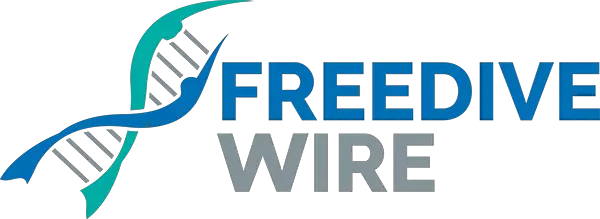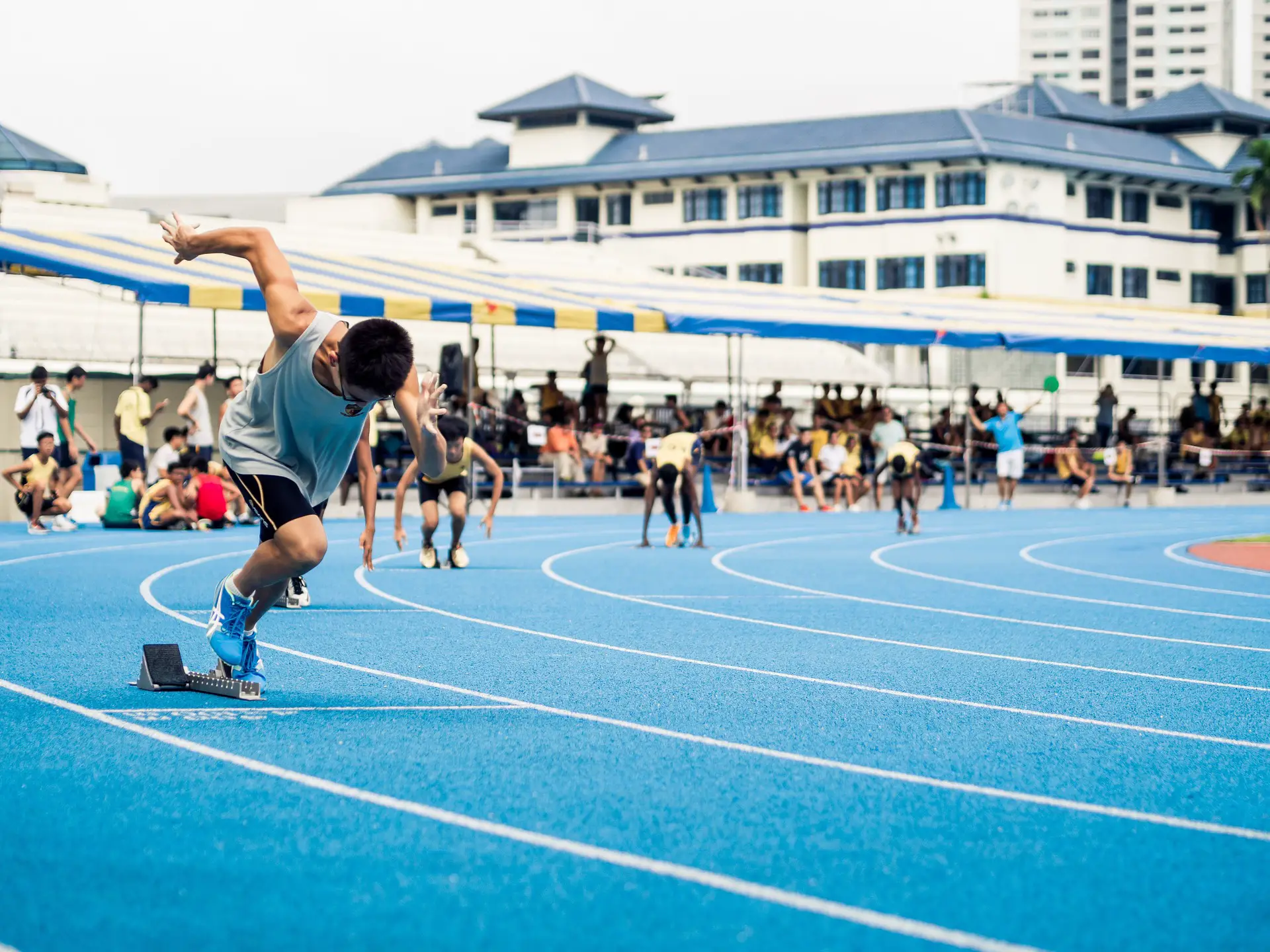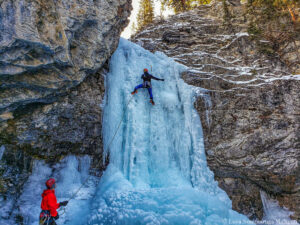You did the perfect duckdive, had the most relaxed descent you have ever had, and turn with a tag in your hand. Or perhaps you waited at the bottom, speared a good fish, and start swimming back up.
And your legs feel like lead.
If you are feeling this leg burn, which is fairly typical for freedivers during longer or deeper dives, your legs have a high concentration of lactate within them. In this article I’ll explain what that lactate is, what it does, and why muscle fatigue or failure results from lactic metabolism. We’ll get just a wee bit technical.
And then I’ll explain how you can train your muscles to minimize that leg burn. You could of course scroll way down to the actual exercise, but if you want to know why the exercise works read the middle part.
Your hypoxic muscles
Sometime during your dive, your muscles are going to run out of oxygen. The blood supply is limited because of vasoconstriction and because of blood shift. Vasoconstriction is the narrowing of the blood vessels in your limbs, reducing the flow of blood. Blood shift is an accumulation of blood in your thorax, a result of an increase in pressure and shrinking lungs.
Both of these mechanisms result in local hypoxia. This leaves us divers with not enough oxygen in the muscle to meet the demands of the dive, even if our organs are still functioning as they should.
Luckily, our muscles have evolved to perform in the absence of oxygen as well as in the presence of oxygen. They just can’t do so for very long.
Lactate and anaerobic metabolism
This is what researchers used to think, and what 99% of people still think: once your muscles run out of oxygen, metabolism continues with lactic acid as a byproduct. The muscles become perfused with lactic acid and they become tired and sore, leading to muscle soreness.
Turns out it is a simplification at best, if not completely wrong.
Once the muscles run out of oxygen, metabolism continues and lactate is produced from pyruvate. This lactate is shuttled to the mitochondria and oxidated to pyruvate through a different reaction. ‘Oxidated’ here simply means that electrons are moved from one molecule to the other, not that oxygen is needed for the reaction. Lactate is actually used as fuel in the muscles!
(You can find detail above my paygrade in the articles here and here)
Don’t worry I’ll get to that leg burn soon enough.
Most of you by now will be wondering… Well what does lactic acid do? The reason that we all talk about lactic acid is an experiment on dead frogs around 1910. Scientist Otto Myerhof used electrical currents to stimulate the frogs’ muscles and after they stopped twitching he measured high concentrations of lactic acid. That was the start of the lactic acid myth.
The myth knows no end. Yet. But Myerhof went on to show that lactic acid (lactate, really) was reprocessed into carbohydrates during recovery. The same chemical reaction that creates lactate increases the H+ concentration in the muscle and makes it more acidic. The increased acidity causes the muscle to lose a moderate amount of force. This is simply a way your body forces you to slow down before you damage the muscle.
Despite the moderate loss in force the increased acidity helps us. The acidity lets the hemoglobin in the muscles release more oxygen, and let’s the nervous system know that the cardiovascular system needs a boost. Of course this may not be all good when you’re 30 m below the surface, but it’s not bad when you’re running track.
Leg burn
So what causes the leg burn? The acidity? Lactate? Guess what… it’s a bit more complicated than that.
Muscle fatigue may be caused by any buildup of metabolites in the muscle cells. Unless all reactions occur at equilibrium there will be a buildup of metabolites somewhere. There is no equilibrium during anaerobic lactic metabolism. You know this by intuition, because you can’t dive with a leg burn forever. You need to breathe and recover.
At the end of 2017 I booked a session to test what dry apnea exercises would induce hypoxia in the muscles. I rented a MOXY, which is a type Near Infrared Spectroscopy (NIRS) sensor, strapped it to my leg, and started my self inflicted torture. The one thing that was most pronounced is that it is actually very difficult to introduce severe hypoxia in the muscles on land (I only found one exercise – but I’ll save that for another article). But despite the muscles maintaining high levels of oxygen, they became so fatigued that I could hardly walk after.
So here’s something to remember. Local hypoxia does NOT equal leg burn. The burn is due to a buildup of metabolic waste.
Lactic training
We can train the body to deal with the higher levels of lactate during a dive. Mid distance sprinters have done so for decades. Whenever you increase the lactate levels in your muscles, they adapt by producing more mitochondria. These mitochondria are the little cellular factories that produce energy from lactate. More mitochondria means you start accumulating (note the subtle difference with producing) lactate later, and a delayed leg burn.
The dive reflex promotes lactic metabolism in the muscles as a result of blood shift and vasoconstriction. If you have just started diving you may not have felt the leg burn yet. With time and repeated diving your dive reflex will becomes stronger and you will become more lactic. One study shows that divers derive up to 50% of their energy anaerobically.

Sprinting for freedivers
You don’t have to have a blue hole in your backyard to train away your leg burn. You can simply sprint! Medium distance sprinters accumulate very high levels of lactate, and therefor we can adapt their training to our needs. Sorry, short distance won’t cut it. You need a good 30 seconds at maximum intensity.
The tempo 200 is a repetition of 200 m sprints at maximum intensity. Men subtract 20 from the time of their first sprint to find their number of repetitions, women subtract 24. A woman that runs 35 seconds for the first 200 m does a total of 11 repetitions. The rest interval is 2 to 3 minutes. I am too impatient to wait more than 2 minutes, which I pay for during the later repetitions. Don’t underestimate them. Remember to sprint at maximum intensity, anything less will drastically reduce the effectivity of this exercise.
Tempo 200’s are an exercise from Clyde Hart’s track and field program. This exercise and many others are available here.
You can also do this exercise on a spinning bike, a rowing machine or in a pool. The best thing is, you don’t actually have to hold your breath so you don’t need a buddy. So when your best friend decides to leave you for a freediving trip to Asia, you can still train. Just remember that the muscles you use for your training are the muscles that will become the most adapted.





Very interesting!
Forgive me if I’m oversimplifying, but it seems like more mitochondria is the key. Well, most any cardio exercise will increase the number of mitochondria and blood flow as well. Is the “tempo 200” simply the most effective way to increase mitochondria or am I missing something?
Hey Connor, excuse the late reply. You’re right that the mitochondria would also increase with cardio. What I think long cardio exercise would not do is adapt your muscles to high lactate concentrations. Specific enzymes are needed to transport lactate such as lactate dehydrogenase. To adapt your muscles to the higher concentrations of lactate that go with a dive you’re best off using these types of sprints rather than a longer endurance style workout.
Full disclosure: it is possible to train the lactate threshold with endurance exercise… but only with a lot of very specific exercise, and fairly long workouts. Sprints are the ‘faster’ and more efficient way to train for freedivers.